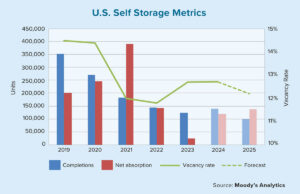The U.S. commercial real estate market has been in a holding pattern for much of this year while the country grapples with the COVID-19 health crisis. In mid-October 2020, Brian Bailey, the commercial real estate subject matter expert for the Federal Reserve Bank of Atlanta, spoke with Scotsman Guide about the state of the market.
Have banks continued lending on commercial real estate through the downturn?
Yes, they are still lending. The capital is still readily available but, as you would expect in a downturn, they certainly have increased their underwriting standards. From the July 2020 Senior Loan Officer Opinion Survey on Bank Lending Practices, which is put out by the Federal Reserve Board, we have seen a significant uptick in the number of respondents that are tightening their underwriting standards. You see that in any downturn.
In what ways are they tightening?
Banks want to be more prudent in times when there is greater uncertainty. So, I understand banks are ratcheting down their LTVs (loan-to-value ratios). They were fairly conservative to begin with compared to 2007. There also is tightening with certain product types. In industrial, it seems that the wheels are still turning at — or very close — to the pre-COVID levels versus the dynamics in retail, which was already challenged because of the changing consumer buying habits with e-commerce. Hotels are challenged because of the social-distancing dynamic, and lockdowns or restrictions that limit business travel. Hopefully, some of those dynamics will reverse course once we have a solution on the health and science front.
Are buyers and sellers mostly on the sidelines now?
There is a challenge right now in establishing asset values via appraisals. One, there has been a significant pullback in the number of raw sales and leasing transactions. Second, the shelter-in-place dynamic caused by the pandemic has greatly impacted customer traffic, and the number of businesses open and reopening. Those circumstances can create personal hardships and hamper establishing asset values. And yes, there is a divergence between buyer and seller expectations. So, a number of folks have gone to the sidelines because of greater uncertainty right now, whether it is establishing value or the disconnect between the current owners and the potential buyers.
Are we seeing many distressed loans and properties yet?
There are early signs of distress as we’ve seen a significant uptick in the amount of assets in the CMBS (commercial mortgage-backed securities) world go to special servicing due to mortgage nonpayment. Roughly 26% of all CMBS hotel loans are in special servicing as of September, according to Trepp. That is an indication of distress. But if distress is defined as the owner having to sell because of a lack of financial resources, I don’t see a lot of distressed assets on the market. There has been an uptick in note sales, but I would not say that there is a significant amount of distressed assets on the market for sale today.
Do you see more distress occurring eventually?
That depends on the longevity of this downturn. There are indications of a significant improvement in the health of the economy. We expect third-quarter GDP (gross domestic product) numbers to be up pretty sizably. In fact, the Atlanta Fed’s GDPNow reported that real GDP growth was tracking at plus-35.3% for the third quarter, as of Oct. 20. We’ve seen significant numbers of people returning to work over the last several months. The other dynamic is the financial wherewithal and current business conditions of the specific property owner. If the borrower was in good standing prior to the arrival of COVID and is now facing duress, lenders have been encouraged to work with borrowers. From that standpoint, we have mitigated some of the early amount of the distressed assets. The hope is that with greater numbers [of businesses] reopening, that increased economic activity will mitigate the hardships faced by owners of hotel and retail properties. But I really couldn’t tell you what that looks like long term.
Is there any reason for optimism for a quick market recovery?
There are a number of positive factors. First, we have an improving economy. Commercial real estate tends to lag the overall economy and it is heavily driven by the number of jobs created. A number of jobs have been reinstated in very short order. That is certainly good news. Second, there is plenty of capital that appears to be available on both the equity and debt fronts. Debt is available from a number of lending sources, whether it is banks, whether it is life insurance companies, etc. That is a good dynamic. Third, as we reopen the economy and it gains more traction, that is going to be a positive for the consumer and for businesses. I firmly believe that business has a relationship dynamic associated with it, and that will come back into play once we see the solution on the health and science front. ●
Author
-

Victor Whitman is a contributing writer for Scotsman Guide and a former editor of the publication’s commercial magazine.
View all posts






